Abstract
1. Charge movements to 10 mV steps at different potentials were studied in voltage-clamped frog skeletal muscle fibres in isotonic solutions that minimized ionic currents, under different pharmacological conditions. The earliest onset of detectable mechanical movement ('threshold') was assessed visually under magnification. 2. Charge movements in isotonic solutions were similar to those reported in hypertonic solutions, under identical pulse procedures. 3. In the absence of local anaesthetics, threshold occurred at a mean membrane potential of -55 mV, after the movement of 4.0 nC/muF of non-linear charge and when the membrane capacitance approximated values that corresponded to the onset of the 'Qgamma' charge movement component. 4. Lidocaine shifted the threshold in the hyperpolarizing direction to -62 mV, and reduced the amount of non-linear charge needed to reach threshold to 1.4 nC/muF. 5. The presence of tetracaine shifted threshold in the depolarizing direction to -39 mV, and more than doubled the amount of non-linear charge that had to move to reach threshold to 10.8 nC/muF. Much of this increase was attributed to the Qgamma component of charge movement. 6. It is concluded that more non-linear charge is required to initiate mechanical movement when calcium release by sarcoplasmic reticulum is inhibited by tetracaine, whereas less charge is so required when calcium re-uptake is being inhibited by lidocaine. Assuming earlier interpretations of the strength duration curve, this is consistent with charge movement preceding, rather than being a consequence of calcium release.
Full text
PDF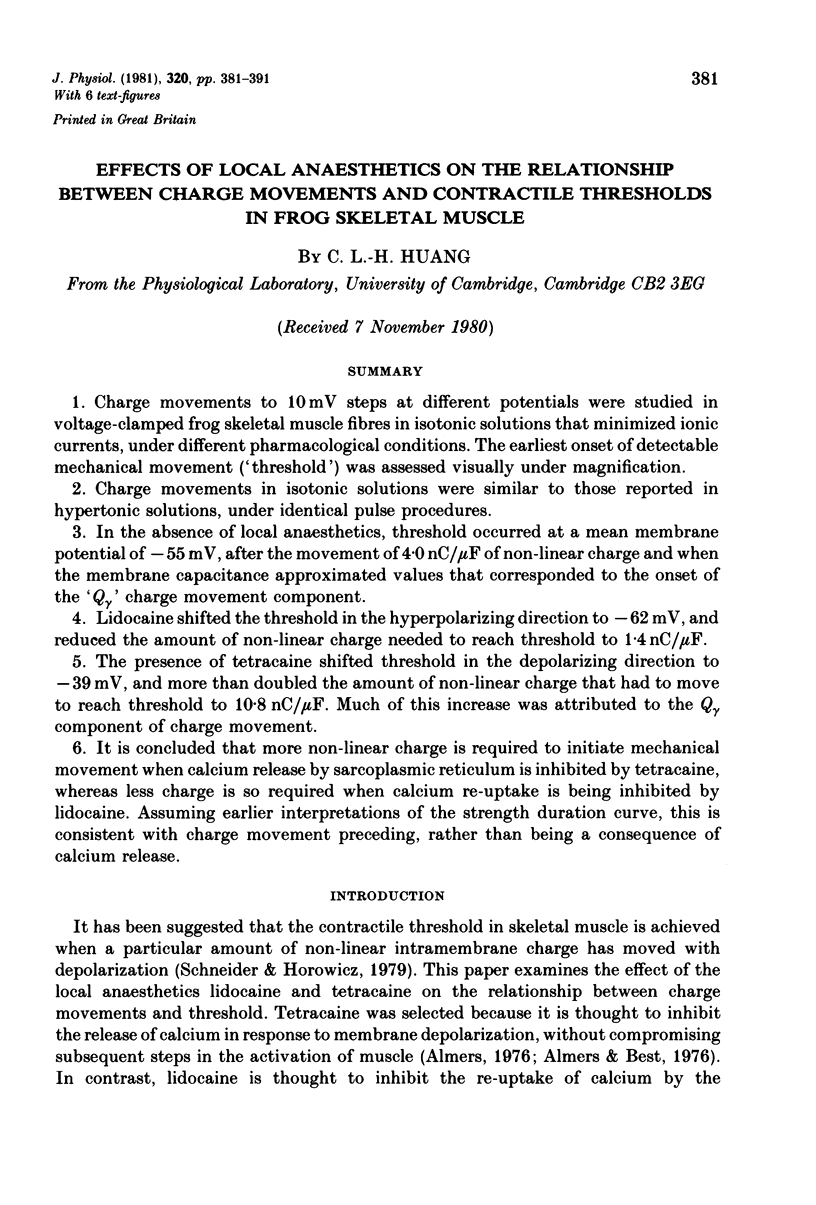
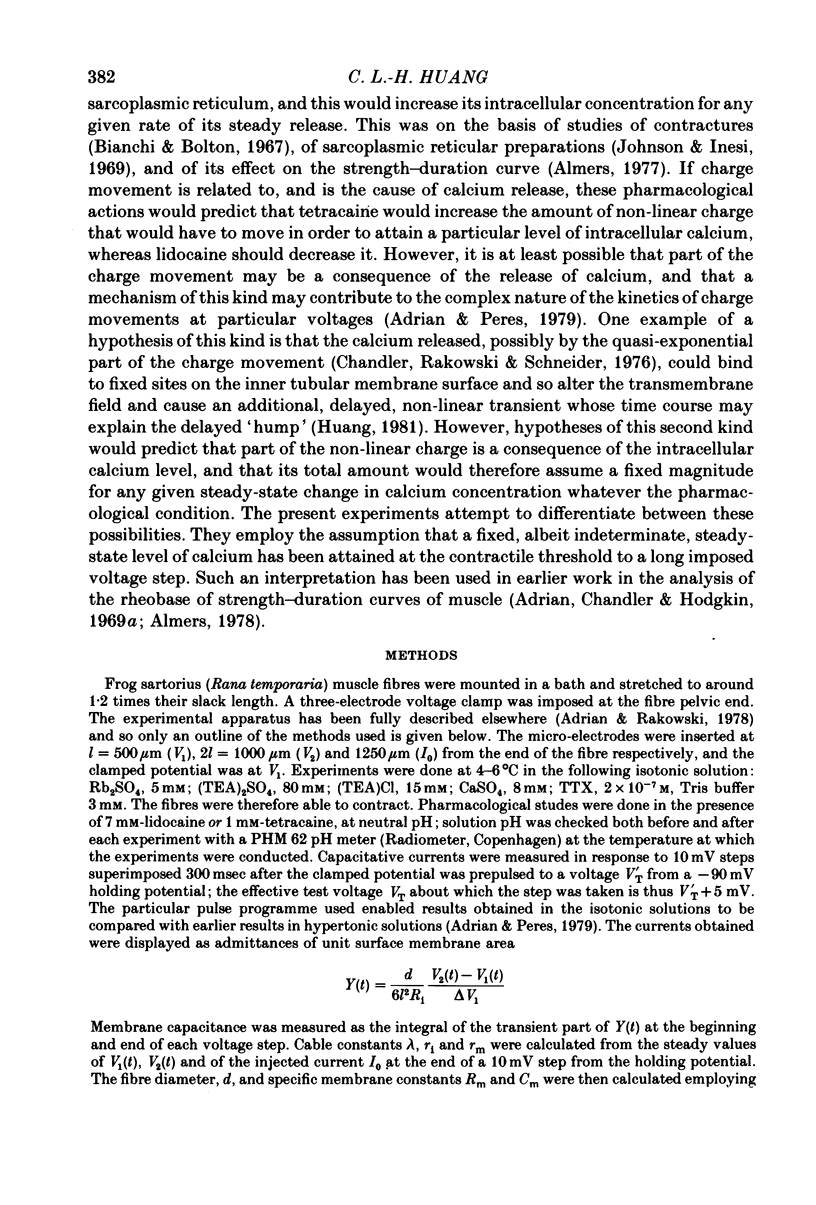
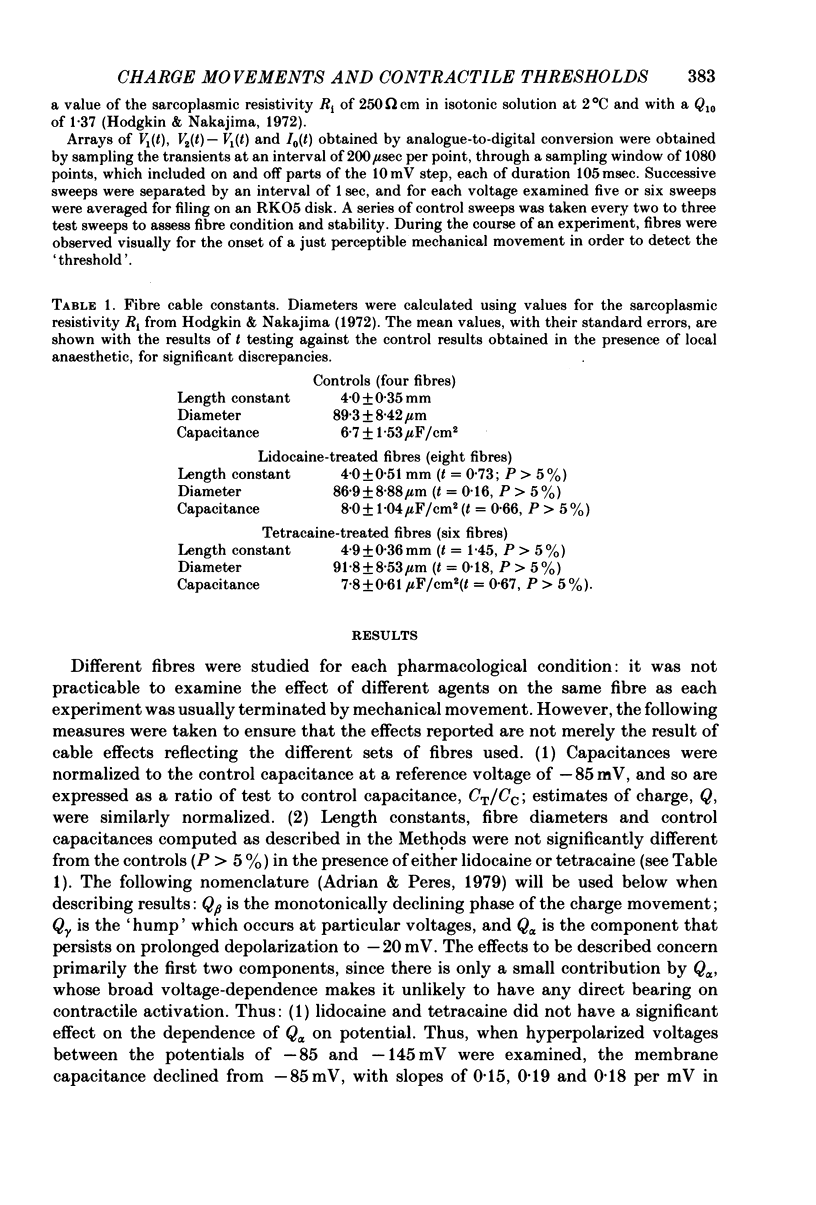
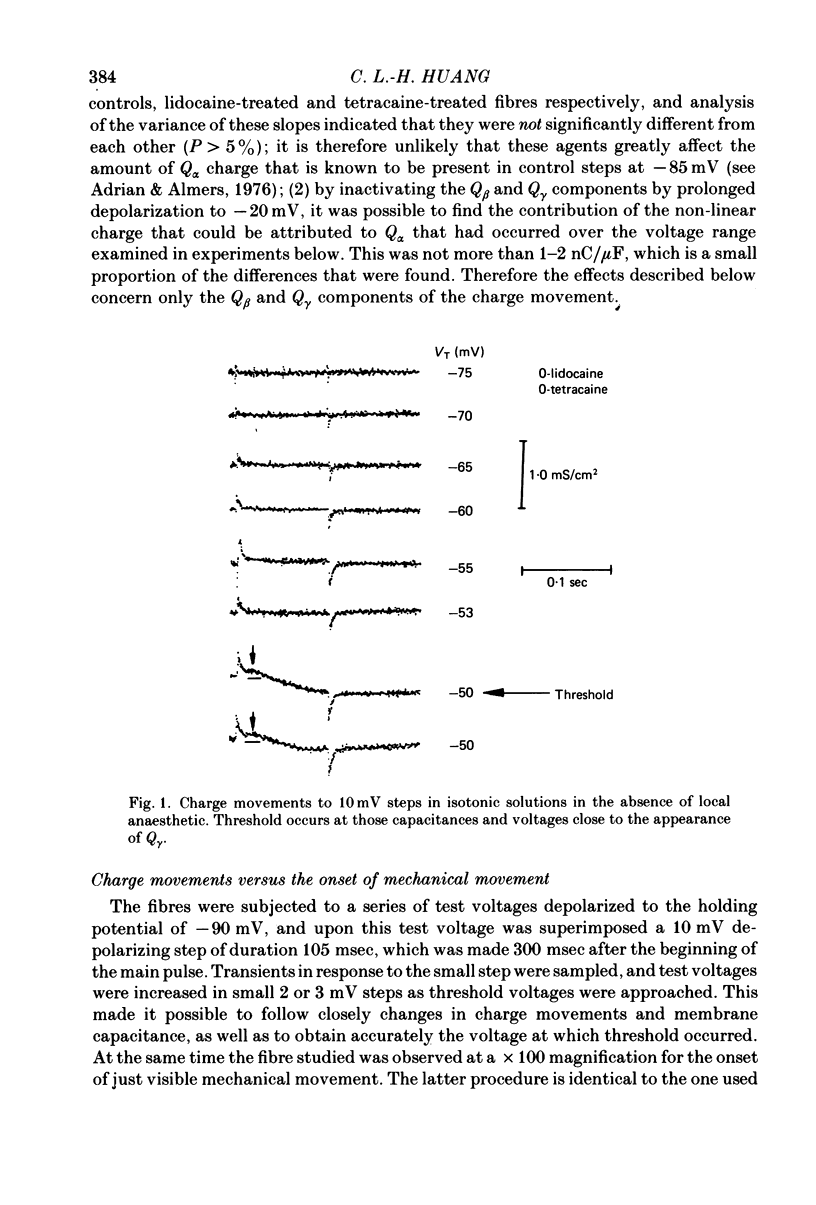
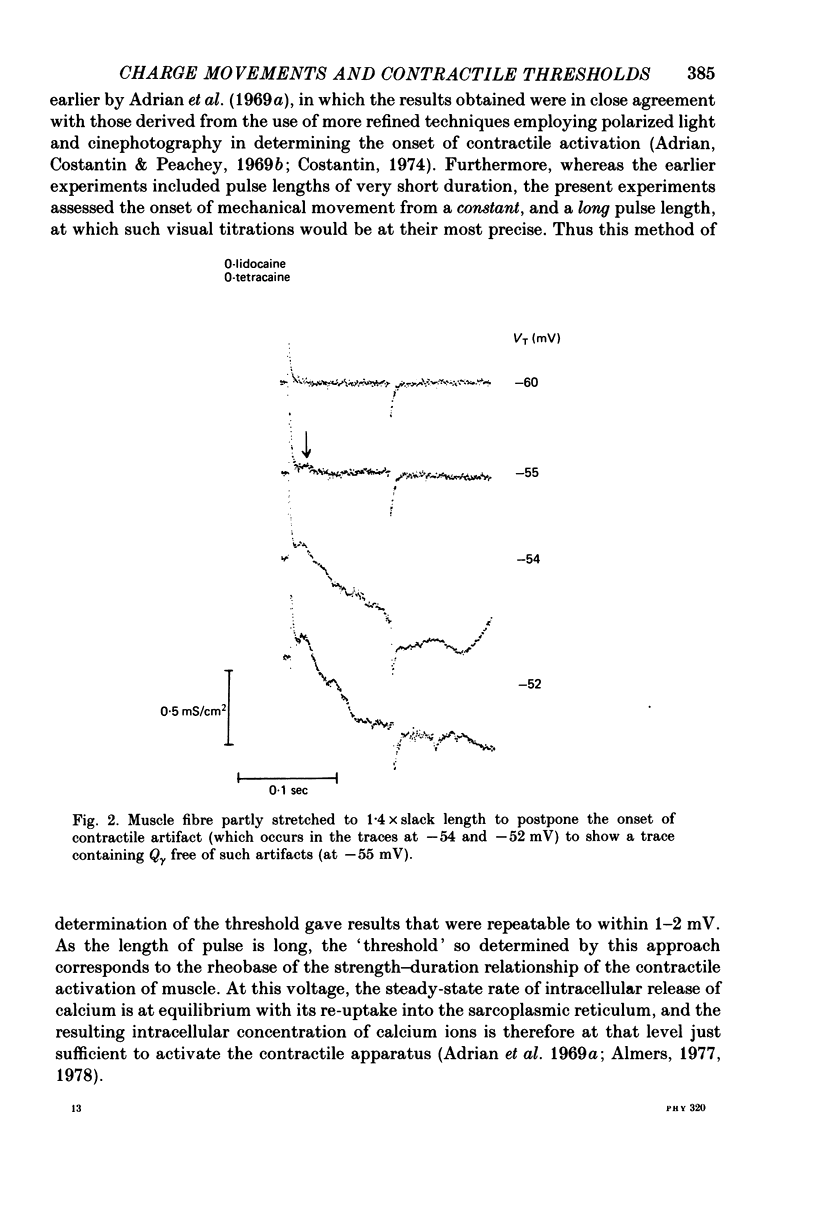
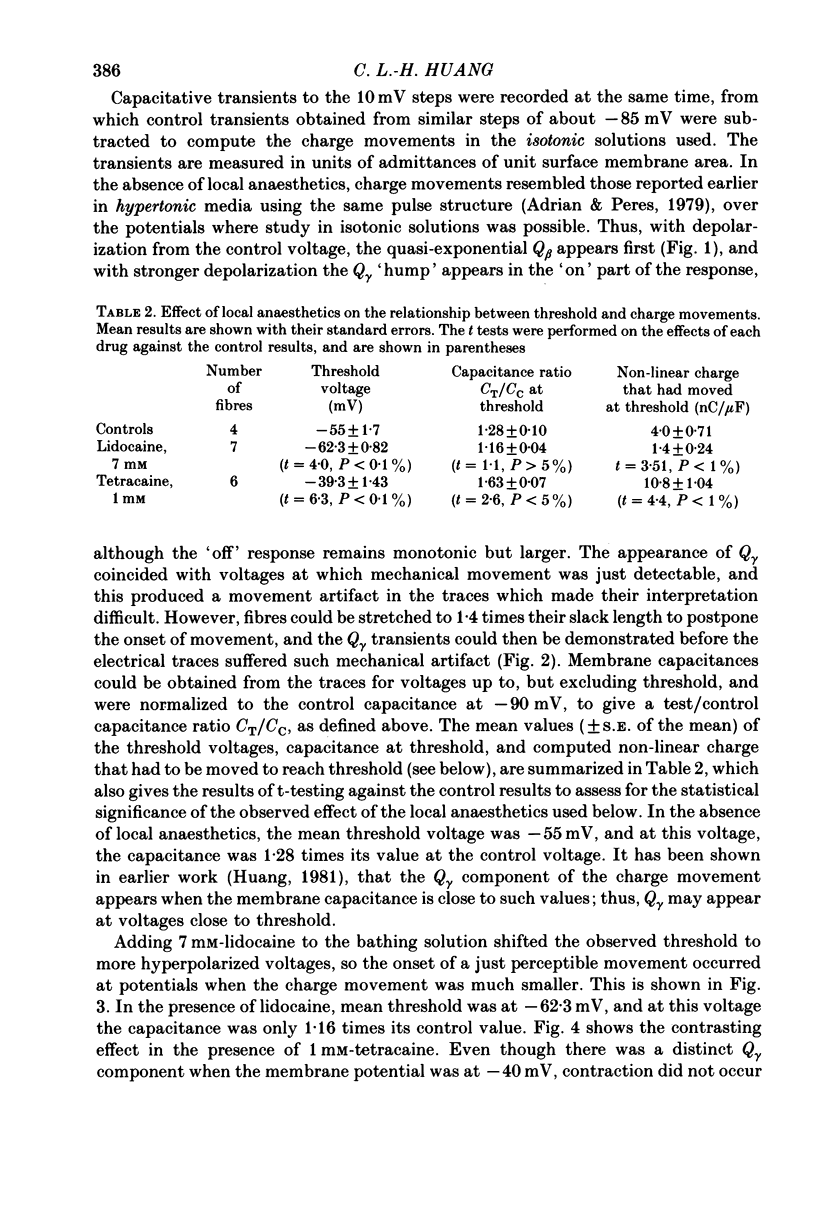
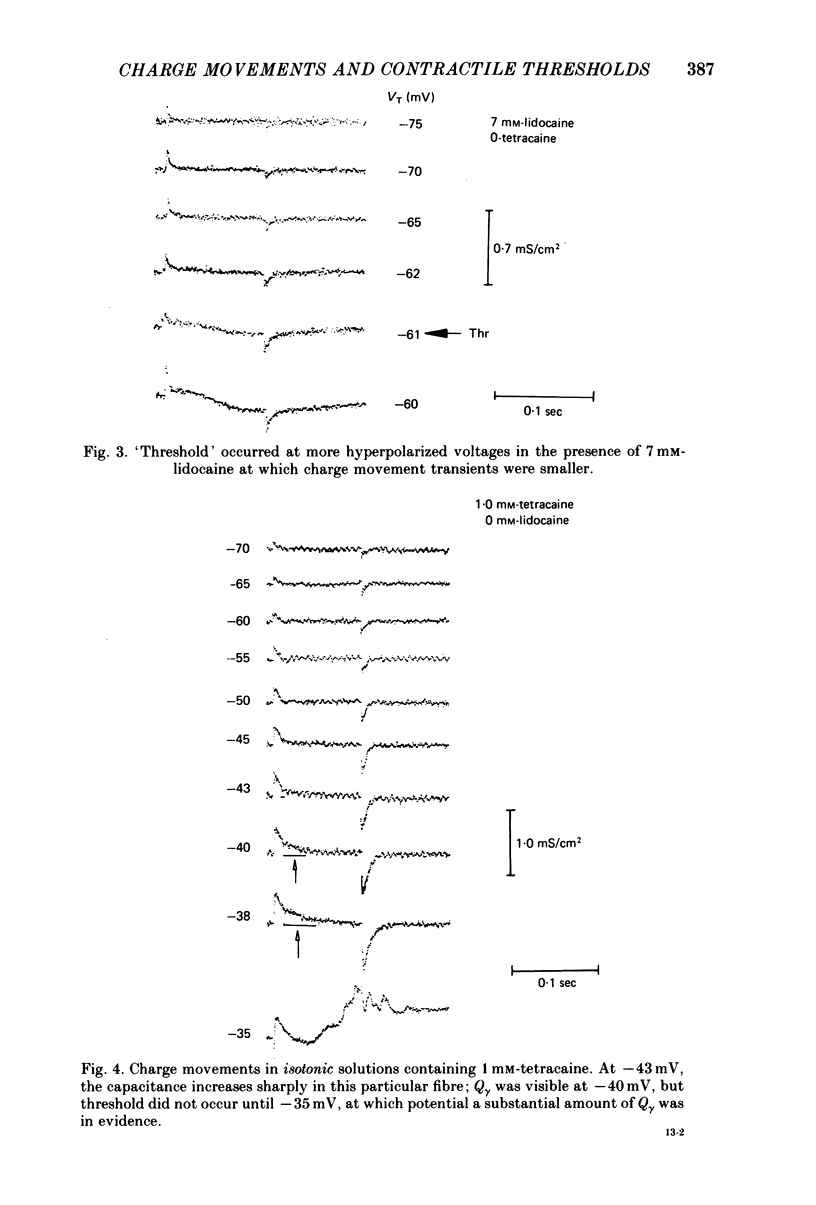
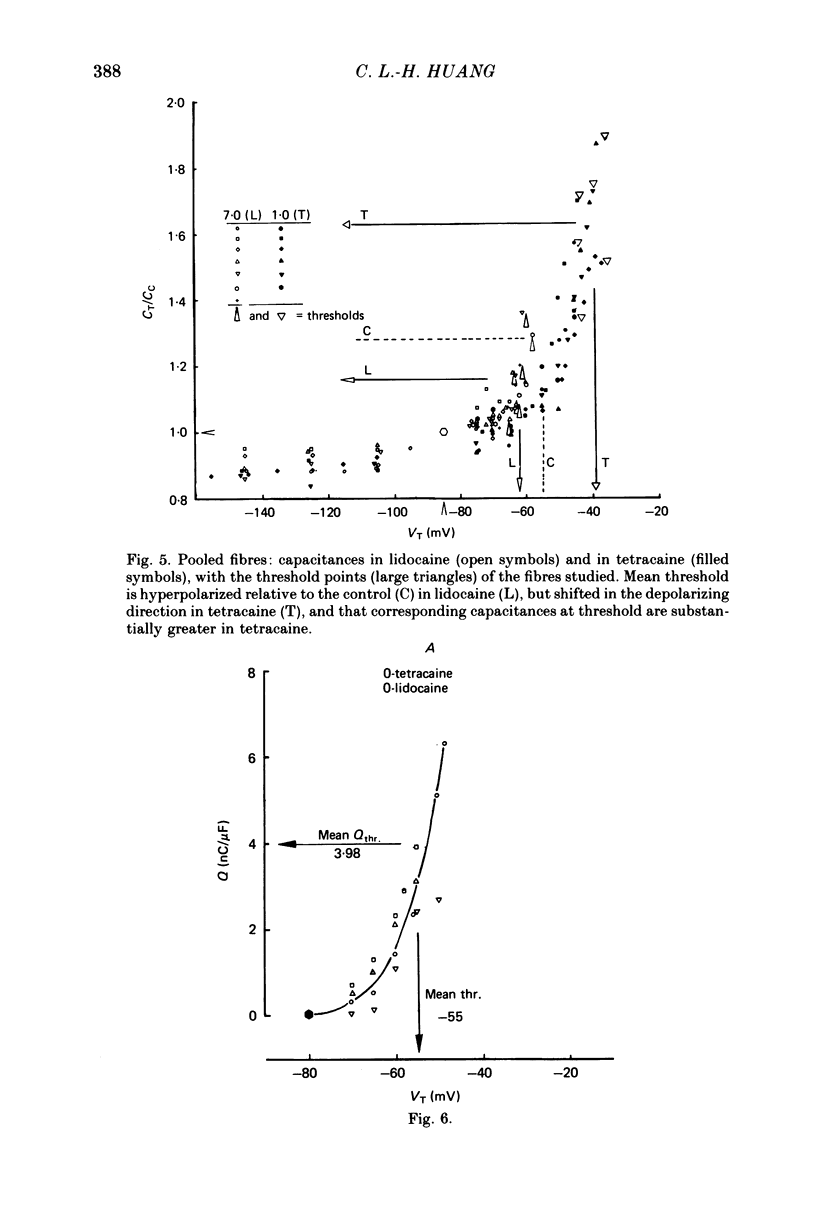
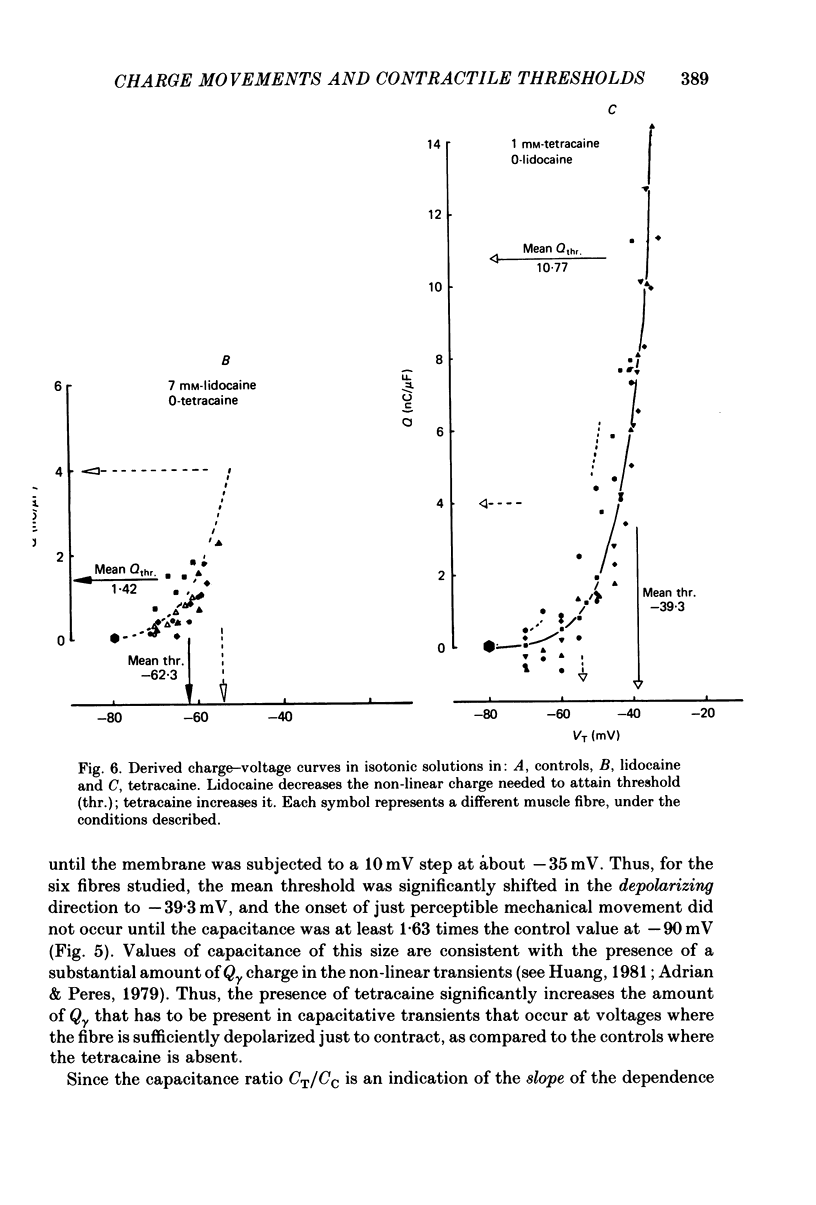
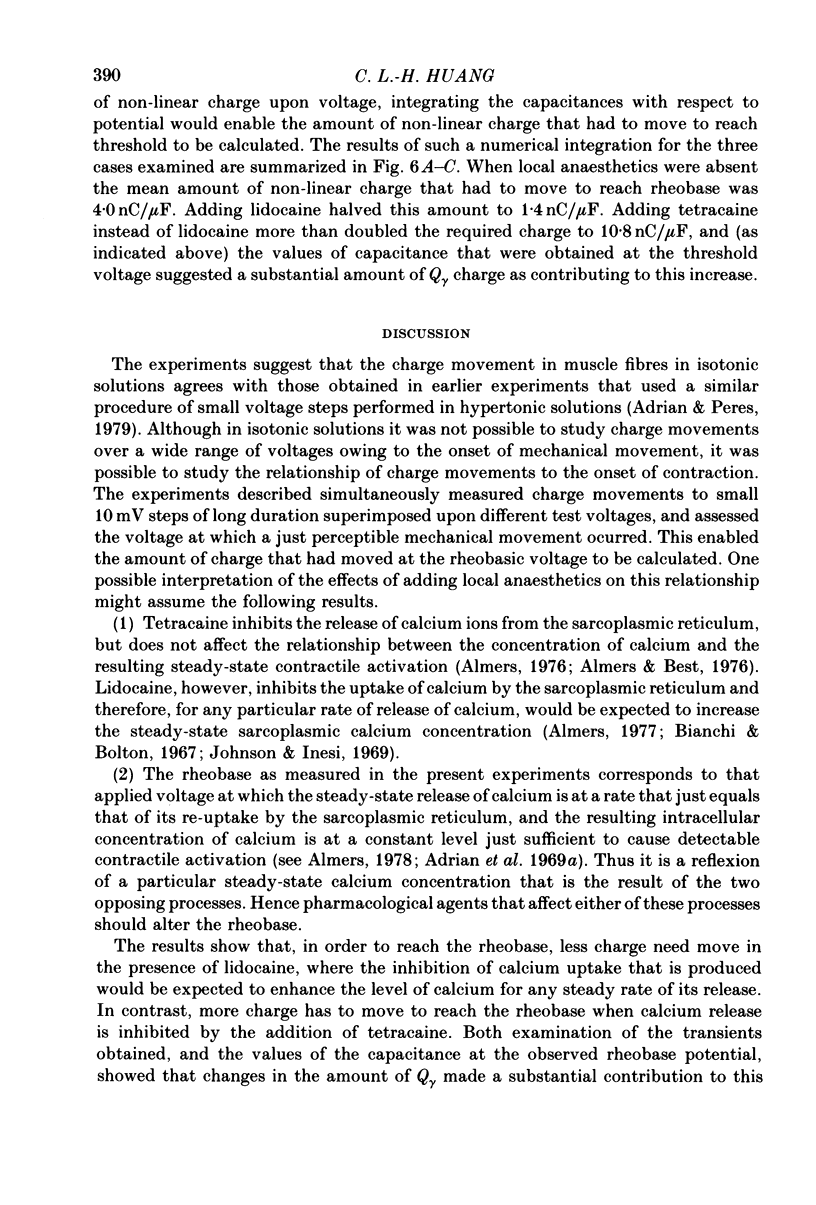
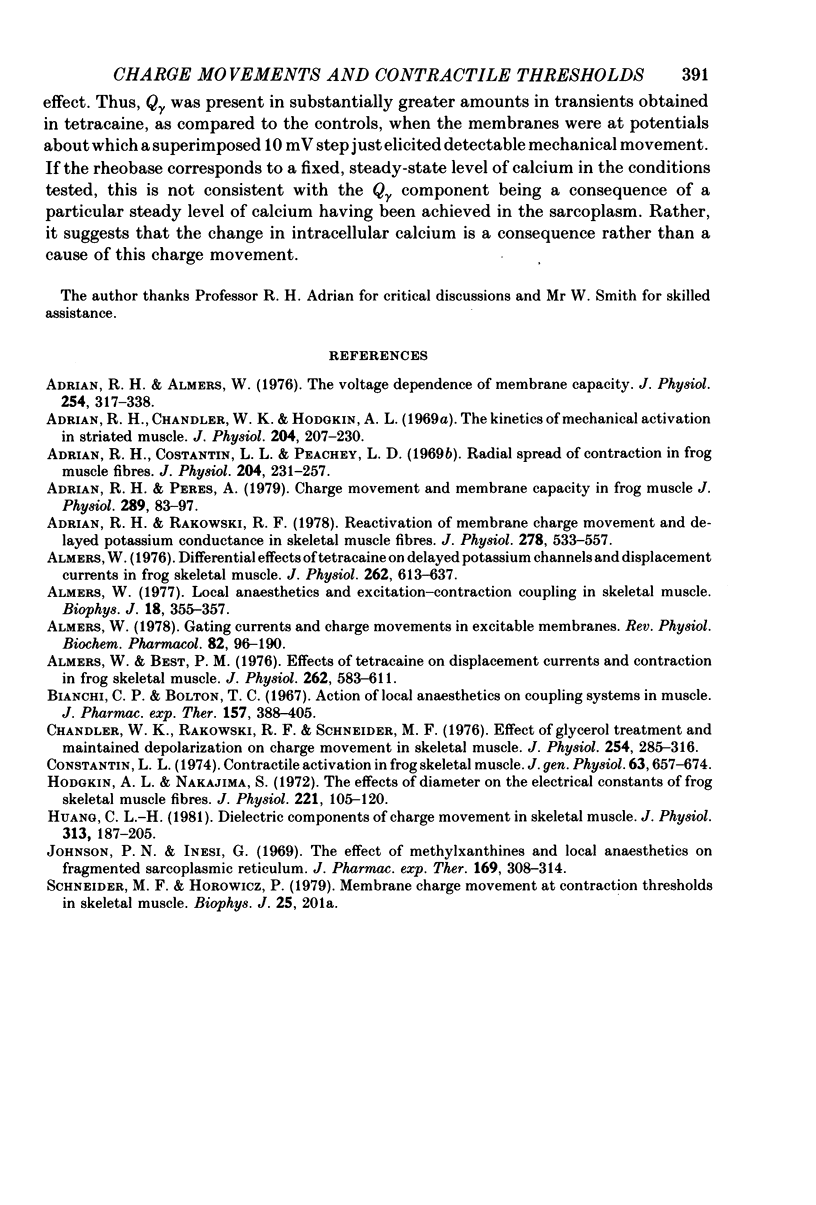
Selected References
These references are in PubMed. This may not be the complete list of references from this article.
- Adrian R. H., Almers W. The voltage dependence of membrane capacity. J Physiol. 1976 Jan;254(2):317–338. doi: 10.1113/jphysiol.1976.sp011234. [DOI] [PMC free article] [PubMed] [Google Scholar]
- Adrian R. H., Chandler W. K., Hodgkin A. L. The kinetics of mechanical activation in frog muscle. J Physiol. 1969 Sep;204(1):207–230. doi: 10.1113/jphysiol.1969.sp008909. [DOI] [PMC free article] [PubMed] [Google Scholar]
- Adrian R. H., Costantin L. L., Peachey L. D. Radial spread of contraction in frog muscle fibres. J Physiol. 1969 Sep;204(1):231–257. doi: 10.1113/jphysiol.1969.sp008910. [DOI] [PMC free article] [PubMed] [Google Scholar]
- Adrian R. H., Peres A. Charge movement and membrane capacity in frog muscle. J Physiol. 1979 Apr;289:83–97. doi: 10.1113/jphysiol.1979.sp012726. [DOI] [PMC free article] [PubMed] [Google Scholar]
- Adrian R. H., Rakowski R. F. Reactivation of membrane charge movement and delayed potassium conductance in skeletal muscle fibres. J Physiol. 1978 May;278:533–557. doi: 10.1113/jphysiol.1978.sp012323. [DOI] [PMC free article] [PubMed] [Google Scholar]
- Almers W., Best P. M. Effects of tetracaine on displacement currents and contraction of frog skeletal muscle. J Physiol. 1976 Nov;262(3):583–611. doi: 10.1113/jphysiol.1976.sp011611. [DOI] [PMC free article] [PubMed] [Google Scholar]
- Almers W. Differential effects of tetracaine on delayed potassium channels and displacement currents in frog skeletal muscle. J Physiol. 1976 Nov;262(3):613–637. doi: 10.1113/jphysiol.1976.sp011612. [DOI] [PMC free article] [PubMed] [Google Scholar]
- Almers W. Gating currents and charge movements in excitable membranes. Rev Physiol Biochem Pharmacol. 1978;82:96–190. doi: 10.1007/BFb0030498. [DOI] [PubMed] [Google Scholar]
- Almers W. Local anesthetics and excitation-contraction coupling in skeletal muscle. Effects on a Ca++-channel [proceedings]. Biophys J. 1977 Jun;18(3):355–357. doi: 10.1016/S0006-3495(77)85620-8. [DOI] [PMC free article] [PubMed] [Google Scholar]
- Bianchi C. P., Bolton T. C. Action of local anesthetics on coupling systems in muscle. J Pharmacol Exp Ther. 1967 Aug;157(2):388–405. [PubMed] [Google Scholar]
- Chandler W. K., Rakowski R. F., Schneider M. F. Effects of glycerol treatment and maintained depolarization on charge movement in skeletal muscle. J Physiol. 1976 Jan;254(2):285–316. doi: 10.1113/jphysiol.1976.sp011233. [DOI] [PMC free article] [PubMed] [Google Scholar]
- Costantin L. L. Contractile activation in frog skeletal muscle. J Gen Physiol. 1974 Jun;63(6):657–674. doi: 10.1085/jgp.63.6.657. [DOI] [PMC free article] [PubMed] [Google Scholar]
- Hodgkin A. L., Nakajima S. The effect of diameter on the electrical constants of frog skeletal muscle fibres. J Physiol. 1972 Feb;221(1):105–120. doi: 10.1113/jphysiol.1972.sp009742. [DOI] [PMC free article] [PubMed] [Google Scholar]
- Huang C. L. Dielectric components of charge movements in skeletal muscle. J Physiol. 1981;313:187–205. doi: 10.1113/jphysiol.1981.sp013658. [DOI] [PMC free article] [PubMed] [Google Scholar]
- Johnson P. N., Inesi G. The effect of methylxanthines and local anesthetics on fragmented sarcoplasmic reticulum. J Pharmacol Exp Ther. 1969 Oct;169(2):308–314. [PubMed] [Google Scholar]


